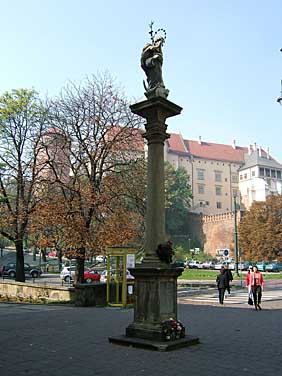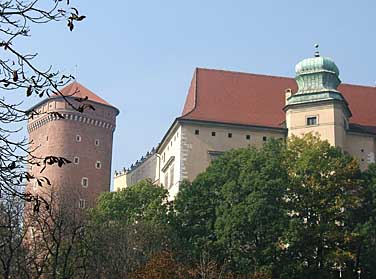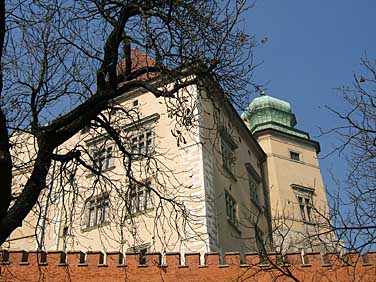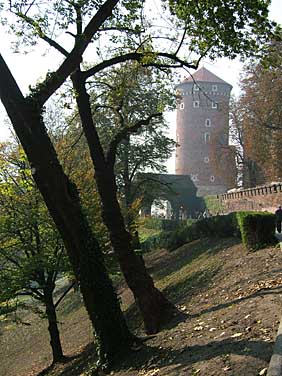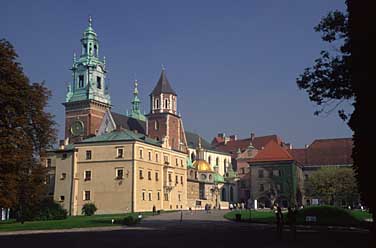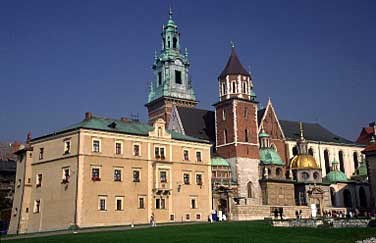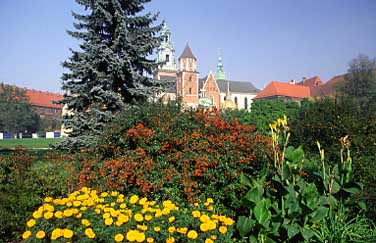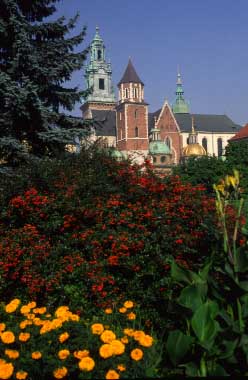If one were to name the single most important place in the Polish national tradition, it would undoubtedly have to be Wawel Castle, a site of unsurprassed historical and artistic rank, built atop of a hill overlooking Vistula river. Traces of settlements on Wawel Hill trace back to the Palaeolithic Age, nearly 50,000 years ago. A structure rose as the royal seat of power sometime in the 10th century. The Royal Castle is a conglomeration of Medieval, Romanesque, Renaissance and Baroque styles each brought by different rulers. After the royal court moved from Kraków to Warsaw in the early 1600s, the castle fell into ruin. More destruction was caused when foreign powers occupied the castle during various wars. The castle was given back to Kraków in the 20th century at which point extensive renovation began. The interior of Wawel Cathedral is overwhelmingly full of spectacular chapels, medieval tombs and sarcophagi. From the exterior, the chapels demonstrate a picturesque variety of architectural styles. The sarcophagi face the altar and are decorated with allegorical animals; dogs represent fidelity and lions represent power. In the cathedral lie two King Sigismunds (one of them the patron saint of Poland), the 11th-century martyr St. Stanislas, and Queen/Saint Jadwiga. Clambering though narrow passages you'll reach the Zygmunt Bell, cast in 1520. It weighs 11 tons and is more than 2m in diameter. Its low, baritone sound can be heard up to 50km away. It is only rung a few times a year on special holidays or circumstances. It is below in the crypt where you can walk around the Royal Tombs. St. Leonard, 10 Polish monarchs, their wives and children as well as a number of military and cultural luminaries are buried here. |
